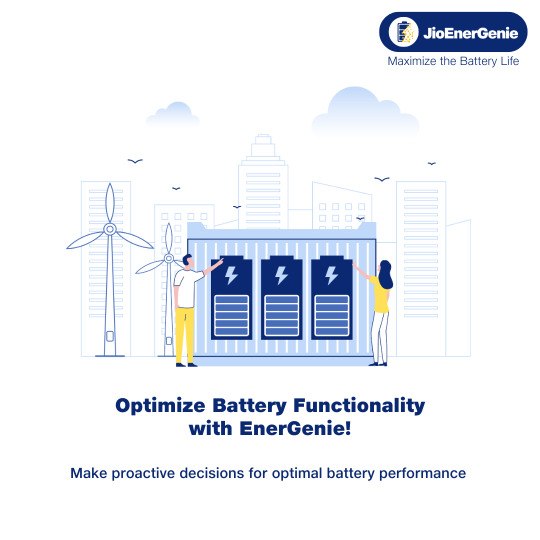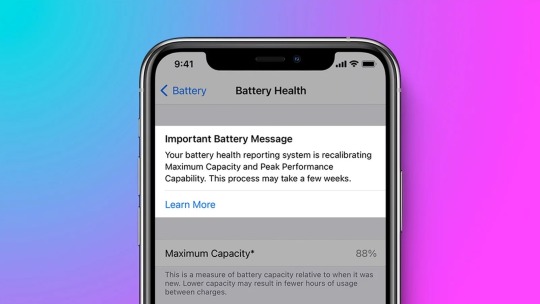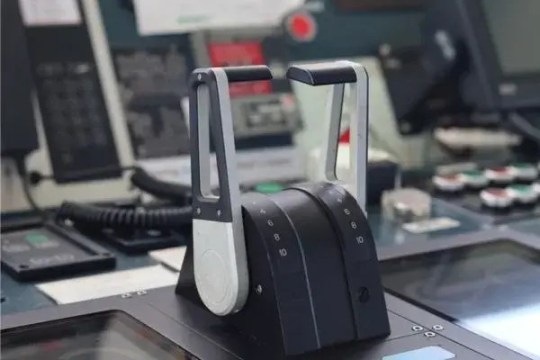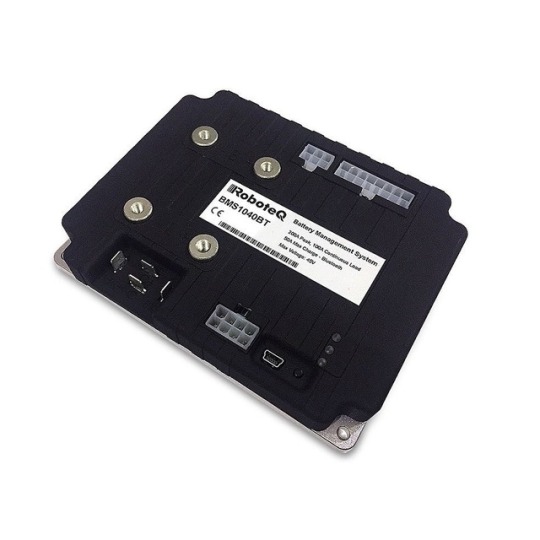#BatteryManagement
Text

Small-size batteries are well stocked, so Leoch can ensure timely delivery of batteries to meet customers' big orders. 🚚
Small-size batteries are well stocked!
#SmallSizeBattery#BatteryDelivery#LeadAcidBattery#BatteryProduction#BigOrders#BatteryStock#TimelyDelivery#BatterySupply#BatteryLogistics#BatteryDistribution#BatteryShipping#LeochBatteries#BatteryInventory#BatteryManagement
3 notes
·
View notes
Text
Introduction to Robot operating system
November 28, 2023
by dorleco
with no comment
Autonomous Vehicle Technology
Edit

Introduction
The open-source middleware system known as the Robot Operating System, or ROS for short, is used to create robotic software. It offers a collection of tools and frameworks that make it easier to create sophisticated and reliable robot applications. Open Robotics is currently responsible for maintaining ROS, which was first created by Willow Garage, a robotics research group.
Key features of ROS include:
Middleware Communication: ROS enables communication between various robotic system components. It facilitates information flow between nodes (separate software processes) using a publish/subscribe messaging system. In order to coordinate different operations inside a robotic system, communication is essential.
Package Management: Resources such as libraries, executables, configuration files, and other files are arranged into packages by ROS. This modular design streamlines the development process and encourages code reuse.
Hardware Abstraction: ROS gives programmers the ability to build code that is not dependent on the particular hardware platform by providing hardware abstraction. The creation of scalable and portable robotic applications is made possible by this abstraction layer.
Device Drivers: ROS comes with a number of device drivers for different robotic platforms, actuators, and sensors. The incorporation of additional devices into a robotic system is made easier by this pre-built support for standard hardware components.

Tools for Visualization: Robotic system monitoring, debugging, and visualization are all included in ROS. Tools that assist developers in comprehending and troubleshooting the behavior of their robots include the simulator Gazebo, the RQT graphical user interface, and the 3D visualization tool RViz.
Community Support: The lively and engaged community of ROS is one of its strongest points. Around the world, developers build and share packages, guides, and best practices as part of the ROS ecosystem. This cooperative setting encourages creativity and speeds up the creation of robotic applications.
Flexibility & Extensibility: ROS is made to be both extendable and adaptable, enabling developers to alter and expand its features to suit their own requirements. Because of its adaptability, ROS may be used for a variety of robotic applications, ranging from commercial goods to research prototypes.
Programming Languages Supported: C++, Python, and Lisp are just a few of the languages that ROS supports. Because of this flexibility, developers can utilize their most familiar language for different parts of their robotic applications.
Benefits of Robot operating system
Numerous advantages provided by the Robot Operating System (ROS) contribute to its acceptance and popularity in the robotics industry. The following are some main benefits of using ROS:
Community-driven and Open Source: ROS is an open-source framework, which permits unrestricted modification and redistribution of its source code. Within the international robotics community, cooperation and knowledge exchange are encouraged by ROS’s open nature. Its development is supported by developers all over the world, creating a rich ecosystem of resources, libraries, and packages.
Modularity and Reusability: The architecture of ROS is modular, with robotic software arranged into packages. Because of its modular design, which encourages code reuse, developers can more easily utilize pre-existing components to create new robotic applications. This quickens the development process and raises the software’s general quality.
Middleware for Communication: ROS offers a communication middleware that facilitates easy communication between various robotic system components. By using a publish/subscribe approach, this middleware facilitates easy information sharing between nodes. The coordination of several sensors, actuators, and algorithms within a robot is contingent upon this communication method.
Hardware Abstraction: ROS enables developers to write code that is not dependent on the particular hardware platform by abstracting the hardware layer. By offering a standardized interface for dealing with sensors, actuators, and other hardware components, this abstraction streamlines the development process. Additionally, it improves portability, which facilitates the adaptation of robotic software to various hardware setups.

Rich Set of Tools: Robot Development, Debugging, and Monitoring are made easier with the many tools that ROS provides. Robot behavior is better understood by developers because of visualization tools like RViz, debugging tools like RQT, and simulators like Gazebo, which facilitate the analysis and optimization of applications.
Device Drivers: For typical sensors and actuators, ROS comes with a large selection of pre-built device drivers. Developers can save time and effort by using this collection of drivers to make the integration of new hardware into robotic systems simpler.
Scalability: Because of its scalable nature, ROS can be used for a variety of robotic applications, ranging from small-scale research prototypes to massive industrial robots. Because ROS is modular and versatile, developers can expand their applications according to the requirements and complexity of the robotic system.
Support for Several Programming Languages: C++, Python, and Lisp are just a few of the languages that ROS supports. This language flexibility enables the integration of existing codebases written in many languages and accommodates developers with varying language preferences.
Simulation Capabilities: Before implementing ROS on real robots, developers can test and validate their robotic algorithms in a simulated environment thanks to its good integration with simulators such as Gazebo. Error risk is decreased with simulation, which can also expedite development.
Educational Resource: ROS is a great educational tool that lets hobbyists, researchers, and students learn about and work with robotics. Both novice and seasoned developers can use ROS because of its wealth of tutorials, documentation, and friendly community.
Drawbacks of Robot operating system
The Robot Operating System (ROS) has many benefits, but users may also run across some issues and problems with it. When thinking about using ROS for a specific robotic application, it’s critical to be aware of these constraints. The following are a few disadvantages of ROS:
Learning Curve: For those new to robotics and software development, in particular, ROS has a steep learning curve. Users may require some time to become skilled in comprehending and utilizing the different components and concepts inside ROS due to the system’s overwhelming complexity.
Resource-Intensive: ROS has the potential to be a resource-intensive program, using a large amount of RAM and computing power. Applications using limited resources, like lightweight robots or tiny embedded devices, may find this concerning.
Performance in Real Time: The original architecture of ROS did not consider real-time applications. Despite recent improvements to real-time capabilities, ROS might not be appropriate for applications like high-speed control systems that demand incredibly low latency responses.
Absence of Standardization: Although commonly utilized, ROS is not strictly standardized in some sectors. Similar functionality may be implemented slightly differently by different developers, which could cause compatibility problems when merging packages from multiple sources.
Security Issues: Because ROS is an open-source framework, security issues could arise. When using ROS in environments where security is a major concern, like robotics applications in the medical or defense industries, users must exercise caution.
Limited Industry Adoption: Although ROS is widely used in academia and research, its uptake in some companies, especially those with safety-critical applications, may be restricted. Industries with strict safety regulations could need more procedures for validation and verification.
Not Suitable for All Robotic Systems: Not every kind of robotic system is a good fit for ROS. For instance, the full potential of ROS may not be greatly beneficial for specialized or simple robots with low processing requirements, adding needless complexity.
Dependency Management: As the number of packages and their versions rises, it might be difficult to maintain dependencies across various ROS packages. Integration problems may arise from package version incompatibilities.
Limited Real-world Deployment Tools: Although ROS offers great simulation tools such as Gazebo, there could be difficulties when moving from simulation to real-world deployment. It might be challenging to create sturdy, dependable robotic systems that function flawlessly in the real world.

Continuous Evolution: The frequent release of new updates and versions of ROS may make it more difficult to sustain and maintain current robotic systems over the long run. There may be compatibility problems between various ROS versions.
Conclusion:
In conclusion, the Robot Operating System (ROS) stands as a powerful and versatile framework that has significantly contributed to the advancement of robotics research, development, and deployment. Its open-source nature, modular architecture, and extensive set of tools have propelled ROS into the forefront of the robotics community.
ROS has been instrumental in fostering collaboration and knowledge-sharing among developers, leading to a vibrant ecosystem of packages and libraries. The benefits of modularity and reusability have allowed for the creation of complex robotic systems with greater ease and efficiency. The middleware communication system enables seamless interaction between various components, contributing to the coordination of sensors, actuators, and algorithms within robots.
Despite its strengths, ROS does come with certain drawbacks, including a steep learning curve, resource intensity, and challenges in real-time applications. However, these limitations need to be weighed against the benefits, and developers must carefully consider the specific requirements of their projects.
In essence, ROS has played a pivotal role in democratizing robotics, providing a platform for both researchers and industry professionals to experiment, collaborate, and innovate. As technology continues to evolve, ROS is likely to adapt and remain a key player in shaping the future of robotics. Its impact on education, research, and industry applications underscores its significance in the broader landscape of robotic systems development.
#Robotoperatingsystem#Transmissioncontrol#Dorleco#EngineControlUnit#FuelEfficiency#InternalCombustionEngine#BatteryManagement#autonomousvehicles
0 notes
Text
🔌⚡ Discover the ultimate wire layout for your battery management system! 💡✨ Say goodbye to tangled cables and embrace a neat and organized power solution. This layout guarantees optimal energy management while enhancing efficiency. Say goodbye to tangled wires and hello to seamless energy management.
#lithiumbattery#lithiumbatterypack#lithiumbatteryfactory#lifepo4lithiumbattery#newenergy#daxingpower#batterymanufacturer#12vbattery#batterymanagementsystem#NeatAndOrganized#WireOrganization#PowerSolution#WireLayout#BatteryManagement
0 notes
Text
Preserve Your Device's Lifespan: Top Tips for Maximizing iPhone Battery Health

Hey there, tech aficionados! 👋📱 If you're someone who heavily relies on your iPhone, you know how crucial it is to maintain its battery health for long-term performance. In this comprehensive guide, we've compiled essential tips and tricks to help you extend your iPhone's battery lifespan, ensuring uninterrupted usage and longevity.
Optimize Charging Habits: Discover the art of charging your iPhone the right way to minimize unnecessary strain on its battery.
Utilize Low Power Mode: Uncover how activating this feature can significantly extend your device's battery life during critical moments.
Manage Background App Refresh: Learn the art of controlling app activity in the background, enhancing your battery's efficiency without compromising functionality.
Adjust Display Settings: Find out how to strike a balance between vibrant visuals and battery preservation through strategic display adjustments.
Explore Battery Health Settings: Dive deep into your iPhone's settings to understand how to monitor and manage its battery health effectively.
Our blog post delves into these tips and much more, empowering you to become a pro at maintaining your iPhone's battery health. To read the full article, click here: Maximizing iPhone Battery Health.
Have you tried any of these tips before? Share your experiences with us in the comments below! Let's make sure our iPhones stay charged and ready when we need them the most. ⚡💪
#iphone#batteryhealth#techtips#devicecare#longevity#iPhonehacks#batteryoptimization#technology#batteryusage#iOS#Apple#lifestyle#productivity#mobiledevices#batterymanagement#smartphone#chargingtips
0 notes
Link
#batteryinsight#batteryintelligence#batterymanagement#batterymanagementsystem#batteryoptimization#batterysoftware#BMS#digitaltwin#ElectricVehicle#Elysia#ElysiaCloudPlatform#ElysiaEmbedded#EV#Futurride#sustainablemobility#WAEElysia#WAETechnologies
0 notes
Text

🔋 🌐 Dive into the realm of limitless possibilities with EnerGenie! We're redefining how you manage the lifecycle of your battery. It is a proactive approach in a reactive world!! EnerGenie offers Remote Monitoring, Calibration, Diagnostics and over-the-air software updates.
🤝 Choose EnerGenie, where empowerment meets simplicity!
For any queries please email: [email protected]
#JioEnerGenie #BatteryManagement #PowerUp #BatteryLife #SmartTech #MonitorAndThrive #IntuitiveTech #EnergyAnalytics #SeamlessIntegration #ManageWithEase
0 notes
Text
𝗦𝗲𝗻𝘀𝗼𝗿𝘀 𝗠𝗮𝗿𝗸𝗲𝘁 𝗧𝗿𝗮𝗰𝗸𝗲𝗿 - 𝗙𝗼𝗿𝗲𝗰𝗮𝘀𝘁(𝟮𝟬𝟮𝟯 - 𝟮𝟬𝟮𝟴) | #industryarc
𝗗𝗼𝘄𝗻𝗹𝗼𝗮𝗱 𝗿𝗲𝗽𝗼𝗿𝘁 𝘀𝗮𝗺𝗽𝗹𝗲 @ https://lnkd.in/gxgqAK_e
#Sensors are commonly deployed #semiconductor devices in wide range of mechanical and #electrical systems and equipment. The key function of sensor is to monitor the surrounding #environment for plethora of physical parameters including #temperature, #pressure, force, strain, inertia, presence and several others. These parameters are gradually provided as an output after an appropriate signal processing through additional circuits.
𝗚𝗲𝘁 𝗺𝗼𝗿𝗲 𝗶𝗻𝗳𝗼 @ https://lnkd.in/gDBeWSRv
The #automotive industry is a major driver of the sensors market. Sensors are essential components for advanced driver-assistance systems (#ADAS), #autonomous#vehicles, and #electricvehicles. They enable features such as collision avoidance, adaptive cruise control, lane departure warning, and more. The increasing adoption of electric vehicles also requires various sensors for #batterymanagement, #motor control, and #energy efficiency.
𝗠𝗮𝗷𝗼𝗿 𝗸𝗲𝘆𝗽𝗹𝗮𝘆𝗲𝗿𝘀 𝗶𝗻𝗰𝗹𝘂𝗱𝗲 : Bosch Sensortec GmbH | Texas Instruments | STMicroelectronics | Honeywell | Sensirion | OMRON Group | TE Connectivity | Analog Devices | NXP Semiconductors | Infineon Technologies
0 notes
Photo

With the increasing demand and supply of 𝐋𝐢𝐭𝐡𝐢𝐮𝐦 𝐁𝐚𝐭𝐭𝐞𝐫𝐢𝐞𝐬, it has become one of the 𝒎𝒐𝒔𝒕 𝒕𝒓𝒂𝒅𝒆𝒅 𝒑𝒓𝒐𝒅𝒖𝒄𝒕 on our portal. 🤗
What are you waiting for join us today and avail 𝟏𝟎𝟎% 𝐅𝐫𝐞𝐞 𝐌𝐞𝐦𝐛𝐞𝐫𝐬𝐡𝐢𝐩💯
🌐Visit- www.go2bng.com
📩E-mail us - [email protected]
📲Call us - 1800 57205 58
#buyandsell #b2b #b2bmarketplace #batterycompany #energysolutions #sustainableenergy #battery #batterystorage #batteryresearch #batterymanufacturer #liionbatteries #batterytechnology #batterymanufacturing #homeappliances #electricvehicles #batteryelectric #bms #batterymanagement #evehicles #india #trade #exportimport7m
1 note
·
View note
Photo

We’ve recently received a lot of good feedback about how accurate the Battery Voltage-Amperage Balancers/Equalizers are. We make the claim that the Battery Balancers keep the batteries voltage difference within 10mV, and we’ve had that confirmed many times by those who’ve used them to balance their battery packs. Balancer Feedback Here’s a small sampling of the comments we’ve received about the Balancers: “The Lithium balancers are keeping my 7S 24V EV battery based off-grid "shore power" solution for my motorhome balanced within 0.01V per cell. Going to check with ECPC any time I need something to do with batteries or power solutions.” “Very pleased with their function. Bought 7 for a 24V LiPo battery. At rest, they were within .05V. once current flowed in and out of the battery they pulled to within .01.” “I tried many cheap units, but none worked then called and asked what Electric Car Parts Company recommended and I ended up getting these. Took a couple days but my lithium system is now balanced and working great. Thank you!” Illustration to show how Battery Balancers protect Batteries This diagram shows how balancers work. Each battery is compared to a cup. Each balancer is like a pump. With the pumps, all the cups will have the same level of water. The balancers are connected in parallel to the batteries. They won’t affect the charging or discharging of the batteries. Having an effective Battery Management System (BMS) is essential to protect any Lithium Battery Pack. We’re very glad to have low-cost solutions that work consistently and to the right specifications. #BatteryBalancer #Balancing #BMS #LithiumBattery #BatteryManagement #LithiumBatteryPack https://www.electriccarpartscompany.com/3V-1S-Lithium-Battery-Balancers-Equalizers https://www.instagram.com/p/B0HI6mHnR4v/?igshid=1h8v4ytcqam97
0 notes
Photo

Posted @withrepost • @fiaformulae It was not a dream! The closest finish in Formula E history happened yesterday in Mexico #BatteryManagement 🔋 ⚡😮 • • • #ABBFormulaE #racing #motorsport 2019 CBMM @niobium.tech #MexicoCityEPrix https://www.instagram.com/p/BuAEzWIBs0g/?utm_source=ig_tumblr_share&igshid=1mqjqaxathoem
0 notes
Text
iOS 14.5 improves battery life after recalibrating iPhone 11
iOS 14.5 improves battery life after recalibrating iPhone 11
The new tool to recalibrate the battery of the iPhone 11 seems to give benefits that go beyond those declared by Apple
With iOS 14.5 beta 6, Apple has integrated a new tool to recalibrate the battery of the iPhone 11, 11 Pro and 11 Pro Max.
Apple has recognized the presence of a bug affecting only these 3 smartphone models that prevents the exact percentage of battery capacity from being…

View On WordPress
0 notes
Text
Hands-on control
November 27, 2023
by dorleco
with no comment
Control Systems
Edit

Introduction
There are a number of features and technologies that can be used to enable hands-on interactions if you’re particularly interested in “hands-on control” for a car. Here are a few instances:
1. Steering Controls:
Use systems for adaptive steering that can be modified in accordance with the user’s preferences and physical capabilities.
Steering Aids: To facilitate steering for users of varying strength levels, incorporate technology such as power steering and variable steering ratio.
2. Throttle and Brake Controls:
Electronic Brake and Throttle: Switch out your old, inflexible mechanical brake and throttle systems with adjustable, sensitive, and responsive electronic controls.

3. Customizable Controls:
Modular controls: Create controls in a way that allows users to add or remove parts according to their own requirements.
Control Sensitivity Adjustment: Allow users to modify the sensitivity of the controls to suit their dexterity and strength levels.
4. Gesture Controls:
Hand Gesture Recognition: By integrating cameras and sensors, this technology can identify hand motions and enable users to manipulate a variety of functions with a simple hand gesture.
Touch-sensitive Surfaces: To facilitate touch-based interactions, add touch-sensitive surfaces to the dashboard or steering wheel.
5. Joystick Controls:
Adaptive Joysticks: Include steering, braking, and accelerating functions with adaptive joystick controls.
Customizable Joystick Inputs: Give customers the option to change the functions that are linked to joystick inputs according to their own tastes.
6. Voice Controls:
Hands-free Commands: Install a strong voice control system so that drivers can operate a number of car systems without lifting their hands.
Voice-Activated Help: Offer voice-activated support for activities such as entertainment, climate control, and navigation.
7. Haptic Feedback:
Integrate haptic feedback into the steering wheel to give users tactile indications regarding the state of the road or navigational instructions.
Feedback for Controls: To improve the user’s awareness of their interactions, give haptic feedback for other controls.
8. Integration of Wearable Technology:
Wearable Controls: Investigate how hand gestures can operate some car functions by integrating wearable technology, such as smart gloves or wristbands.
9. Augmented Reality (AR):

Benefits of Hands-on Control
Hands-on control in vehicles, where the driver actively manipulates physical controls such as steering wheels, pedals, and other interfaces, can offer several benefits:
1. Immediate Response:
Quick Reaction Times: Hands-on controls allow drivers to respond rapidly to changing road conditions, potential hazards, or unexpected events.
2. Enhanced Control:
Fine Motor Skills: Hands-on controls leverage the driver’s fine motor skills, allowing for precise control over steering, acceleration, and braking.
3. Intuitive Interaction:
Natural Interface: Using voice commands or touchscreens is frequently thought to be less intuitive and natural than manipulating physical controls, which makes for a more seamless driving experience.
4. Tactile Feedback:
Sensory Input: Drivers can assess road conditions and vehicle behavior by using tactile feedback from physical controls to make necessary adjustments.
5. Reduced Cognitive Load:
Minimal Distraction: By preventing drivers from having to take their eyes off the road to glance at touchscreens or other interfaces, hands-on controls can lessen cognitive load and improve driver focus.
6. Muscle Memory:
Automated Motions: Drivers get muscle memory for certain motions over time, which makes it simpler to use controls without realizing it.
7. Universal Familiarity:
Common Design: Because many drivers are accustomed to using traditional hands-on controls, switching between different vehicles won’t require them to go through a difficult learning curve.
8. Safety Benefits:
Physical Presence: By keeping the driver physically involved in the driving activity, hands-on controls may lessen the chance of accidents caused by distraction.
9. User Preference:
Personal Comfort: For some drivers, there’s nothing more comfortable or delightful than the tactile sensation of physical controls.
10. Obtainability:
Inclusive Design: By keeping accessibility in mind while designing physical controls, a variety of users—including those with different physical abilities—can be served.
Drawbacks of Benefits of Hands-on Control
Although using hands-on controls has many advantages, there are disadvantages to this conventional method of operating a car. It’s critical to be aware of these constraints in order to fully comprehend the difficulties associated with depending just on manual control systems:
1. Limited Adaptability:
It may be difficult for those with specific physical ailments or disabilities to adjust hands-on controls, which restricts accessibility for a wide variety of drivers.
2. Reduced Automation:
In contrast to more automated systems, adaptive cruise control, and lane-keeping assistance may not be as smoothly incorporated with manual controls.
3. Space and Design Constraints:
Vehicle interiors may be less able to incorporate innovative and ergonomic design elements due to the conventional hands-on control layout.
4. Complexity for Novice Drivers:
Compared to more automated or simplified interfaces, novice drivers may find it difficult to coordinate several hands-on controls, resulting in a higher learning curve.
5. Fatigue and Strain:
Long-term hand-held control usage can lead to physical strain and driving weariness, particularly in congested areas or on lengthy trips.
Risk of Injury: Compared to a fully automated system with fewer projecting or harsh surfaces, a system with physical controls may have a larger risk of injury in the event of a collision.
Reluctance to Change: The broad adoption of increasingly sophisticated and automated driving systems may be hampered by drivers’ reluctance to adopt new technologies.
6. Possibility of Human Error:
With hands-on control systems, mistakes in judgment, reflexes, or coordination could still happen and endanger lives.
7. Space Utilization:
The amount of space taken up by conventional controls may restrict the interior design of the vehicle and have an adverse effect on its overall aesthetic appeal.
8. Maintenance and Wear:

Conclusion:
In conclusion, hands-on control systems in vehicles offer a range of benefits, including immediate response, enhanced control through fine motor skills, intuitive interaction, tactile feedback, and reduced cognitive load. The familiarity of physical controls, muscle memory development, and their widespread acceptance make hands-on systems accessible and comfortable for many drivers. Additionally, the safety benefits of a physically engaged driver and the potential for redundancy in the face of technological failures are notable advantages.
However, hands-on control systems are not without drawbacks. They may pose challenges for individuals with certain physical disabilities, limit adaptability, and resist the full integration of advanced automation features. Issues such as driver fatigue, the potential for injury in collisions, and constraints on design flexibility are also considerations.
The future of vehicle control systems may involve striking a balance between hands-on controls and advanced technologies to harness the benefits of both approaches. Hybrid systems that combine the familiarity of traditional controls with the efficiency and safety features of automation are likely to play a key role in shaping the next generation of vehicles. As technology continues to evolve, addressing the limitations of hands-on controls will contribute to creating more inclusive, adaptable, and user-friendly driving experiences for a diverse range of individuals.
#VehicleDiagnostics#Transmissioncontrol#Dorleco#EngineControlUnit#FuelEfficiency#InternalCombustionEngine#BatteryManagement#autonomousvehicles
0 notes
Video
MIUSA-BMSLV POSTED!! Grab yours while available, we have limited supply of the first batch. Ship date 1/31/2020 at $399 pre sale price! #solar24news #solarpanels #solarenergy #solarpower #batterymanagementsystem #batterymanagement #valencebatteries https://www.instagram.com/p/B5rYvTpHoDN/?igshid=mvc5i8udhx4b
#solar24news#solarpanels#solarenergy#solarpower#batterymanagementsystem#batterymanagement#valencebatteries
0 notes
Photo

Lithium Battery Management Systems Lithium Ion batteries store the highest power per unit of weight. With cost coming down rapidly, if you are not yet using Lithium, chances are that you will soon. Come see how and why Roboteq’s is the only low voltage, high current BMS that is specifically tuned for Mobile Robot application. https://www.roboteq.com/index.php/roboteq-products-and-services/peripherals-extenders #RoboteQ #robotics #batterymanagement #batterymanagementsystem #lithiumbattery #lithiumbatteries #lithiumbatterymanagement #lithionionbattery #lithionionbatteries
#robotics#roboteq#lithiumbattery#lithionionbatteries#lithiumbatteries#lithiumbatterymanagement#batterymanagementsystem#lithionionbattery#batterymanagement
0 notes
Link
#AI#artificialintelligence#batteryhardware#batterymanagement#batterysoftware#battery-as-a-service#BATV#bi-directionaladaptiveterminalvoltage#ElectricVehicle#EV#EVbattery#Futurride#lithiumtitaniumoxide#LTO#micromobility#sustainablemobility#Toshiba#ZapBatt
0 notes
Text

🔋 💯 Unlock the full potential of your battery packs with EnerGenie! Our revolutionary platform introduces an intuitive dashboard, seamlessly empowering you to analyze and manage your battery pack’s entire lifecycle effortlessly.
⚡ Say goodbye to complexity and welcome a new era of smart energy monitoring. Embrace EnerGenie and let your batteries thrive!
For any queries please email: [email protected]
#EnerGenie #BatteryPacks #Empower #SmartEnergy #BatteryManagement
0 notes